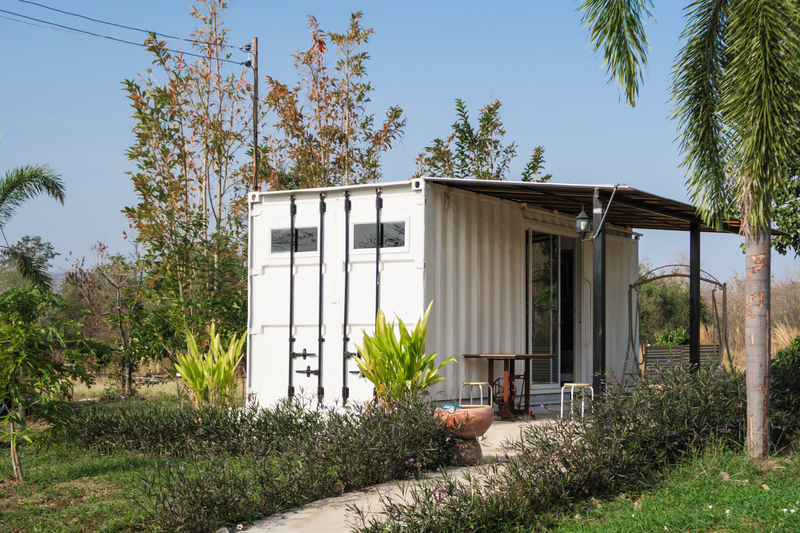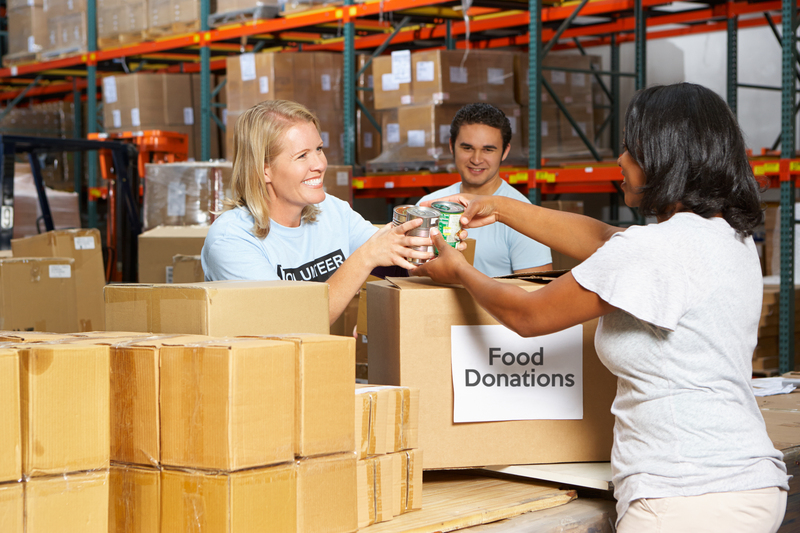The Ultimate Guide to Recycling and Disposing of Kitchen Cookware
Kitchen cookware is essential in every home, but what happens when pots, pans, and baking sheets wear out or become unsafe to use? Proper recycling and disposal of cookware is crucial for environmental sustainability and can even benefit your local community. In this comprehensive guide, we'll explore eco-friendly ways to dispose of old kitchen cookware, the recycling process for different materials, donation options, upcycling ideas, and tips to minimize waste in the future.
Why Recycling and Disposing of Kitchen Cookware Matters
Every year, millions of tons of cookware end up in landfills, adding to the growing waste crisis. By choosing responsible disposal practices, you:
- Reduce landfill waste
- Conserve valuable resources
- Promote recycling industries
- Lower your carbon footprint
Understanding different types of cookware and the best recycling methods can make a significant environmental impact and may even save you money in the long run. Let's dive into the details.

Types of Kitchen Cookware and Their Recycling Challenges
Cookware comes in many forms, typically made from materials like aluminum, stainless steel, cast iron, copper, ceramic, glass, and non-stick surfaces. Each material has distinct recycling procedures and considerations.
Aluminum Cookware
Aluminum pots and pans are relatively easy to recycle, as aluminum is one of the most valuable and widely recycled metals. However, some recycling centers may require you to remove any plastic handles or non-metal parts before processing.
Stainless Steel and Cast Iron
Stainless steel and cast iron cookware are extremely durable and can often be recycled along with scrap metal. Cast iron, in particular, can last for generations, but if it does reach the end of its life, it is fully recyclable at most metal recycling facilities.
Copper Cookware
Copper pans are popular but must be separated from other metals for recycling. Some may have coatings or additional materials that need special attention.
Ceramic and Glass Cookware
Unfortunately, ceramic and glass cookware is not always accepted at standard recycling centers due to the high firing temperatures and unique materials used, which differ from regular glass containers. Specialized facilities may accept these items, but more often, reuse or donation is the more sustainable option.
Non-Stick Cookware (Teflon and Other Coatings)
Non-stick surfaces--such as those with PTFE (Teflon) or ceramic coatings--pose unique difficulties when recycling cookware. The coatings cannot be processed with metals, and some local recycling programs may not accept them at all. Careful research is required to find proper disposal methods for these pans.
How to Prepare Cookware for Recycling
Before recycling cookware, prepare it to ensure it can be processed efficiently and safely:
- Clean thoroughly: Remove all food residues and wash with soap and water.
- Disassemble when necessary: Take off plastic or wooden handles, lids, or non-metal parts.
- Separate materials: If a pan is a combination of metals, check with your recycling center for guidelines.
- Check for coatings: Non-stick or painted surfaces may need special handling.
- Confirm acceptance: Contact your local recycling center to make sure they accept the type of cookware you are recycling.
Where to Recycle Old Cookware
Not all recycling centers accept cookware, and rules vary based on location and material. Here are some reliable outlets:
1. Local Scrap Metal Yards
Most scrap metal recyclers accept aluminum, stainless steel, cast iron, and sometimes copper cookware. These facilities are experts at sorting and processing metals for reuse.
2. Municipal Recycling Centers
Check with your city or municipal program; some accept metal cookery in household recycling bins, while others require special drop-off.
3. Retailer Take-Back Programs
Some cookware brands and retailers, such as Williams Sonoma or Sur La Table, offer take-back or recycling programs for old cookware with purchases of new items. Always ask when considering an upgrade.
4. E-Waste Collection Events
Special events for electronics and household goods recycling occasionally accept cookware, especially items that blend materials and need expert handling.
Donation: Giving Your Cookware a Second Life
If your cookware still has life left in it, donation is a fantastic option. Many people, shelters, and organizations benefit greatly from second-hand kitchenware.
- Local charities and shelters: Homeless shelters, women's refuges, and community kitchens often need kitchen supplies.
- Thrift stores: Goodwill, Salvation Army, and other thrift organizations accept usable kitchen items for resale.
- Online give-away platforms: Websites like Freecycle, Facebook Marketplace, or Craigslist are great places to offer cookware for free.
Donation Tips
- Ensure it's clean and not excessively worn, rusted, or damaged.
- Group items (like matching lids) for convenience.
- Contact organizations first to confirm what they accept.
Creative Upcycling Ideas for Old Cookware
Sometimes, recycling and donation aren't an option, especially if the item is damaged or non-recyclable. Upcycling cookware transforms waste into creative, useful, or decorative items:
Pots and Pans
- Plant Pots: Fill old saucepans with soil and plant herbs, flowers, or succulents.
- Storage Bins: Use clean pots to organize utensils, tools, or craft supplies.
- Bird Feeders: Hang shallow pans from trees and fill them with bird seed for a rustic garden feeder.
Cake Tins and Baking Trays
- Wall Art: Paint and decorate baking tins for unique kitchen or porch decor.
- Drawer Organizers: Use muffin tins to divide and organize small items in drawers.
- Serving Trays: Repurpose large bakeware as serving trays or party platters.
Cast Iron Upcycling
- Doorstops or Bookends: Heavy old skillet? With a little paint, it can become a quirky doorstop or a sturdy bookend.
Other Fun Ideas
- Kids' Craft Projects: Kids can transform old cookware into musical instruments with some creativity and paint.
- Pet Dishes: Clean, shallow pans make durable pet food or water dishes.
Disposing of Non-Recyclable Cookware
Sometimes, recycling kitchen cookware simply isn't possible. This is often the case with:
- Severely rusted or damaged items
- Cookware made of mixed, inseparable materials
- Heavily coated non-stick pans with peeling or unsafe surfaces
For these items, your options are limited:
- General waste: As a last resort, place in general waste bins. However, always remove any recyclable parts first.
- Hazardous waste disposal: If there are chemical coatings or unknown materials, consult your local hazardous waste facility.
How to Dispose of Non-Stick Cookware Responsibly
Non-stick pans, especially those with Teflon or PFAS coatings, must be handled with care. Here's a recommended process:
- Check with your local recycling center for guidelines; some accept non-stick pans if you remove the handle and label the item.
- If not accepted, inquire at scrap metal yards; some have a process for separating coatings from metal.
- If neither option is available, wrap the pan to prevent injury and dispose of it in general waste as a last resort.
- Always avoid incinerating or burning non-stick cookware due to toxic fumes.
Frequently Asked Questions About Kitchen Cookware Disposal & Recycling
Q: Can I put old pots and pans in my curbside recycling?
Most household recycling programs do not accept pots and pans because their materials and coatings do not match standard recyclables. Always check with your municipality before placing cookware in curbside recycling bins.
Q: Is it safe to donate non-stick cookware?
Yes, provided the non-stick coating is intact and not flaking. Pans with damaged or worn coatings should not be donated, as they may pose health risks.
Q: What can I do with glass bakeware that's chipped or broken?
Unfortunately, broken glass bakeware is not recyclable. Dispose of it by carefully wrapping it in newspaper or cardboard and placing it in your regular trash to prevent injury.
Q: Are there specialty recycling programs for cookware?
Some brands and kitchen retailers offer specialized recycling services, especially for high-end or brand-specific products. TerraCycle and similar organizations have paid programs for hard-to-recycle household goods, including some cookware.
Tips to Prevent Cookware Waste in the Future
Minimizing future waste starts with smart purchasing and maintenance:
- Choose quality: Invest in durable, long-lasting cookware made from recyclable metals.
- Avoid unnecessary coatings: Opt for uncoated stainless steel or cast iron when possible.
- Repair and restore: Re-season cast iron or fix minor dents and scratches in metal pans instead of replacing them.
- Care for your cookware: Follow manufacturer care instructions to extend the life of non-stick and specialty items.
- Buy second-hand: Consider purchasing pre-loved cookware from thrift stores or online marketplaces to reduce demand for new goods.

The Environmental Benefits of Proper Cookware Recycling
When you recycle kitchen pans or other cookware, you:
- Help conserve raw materials and energy needed for new metal production
- Reduce greenhouse gas emissions
- Support the circular economy and local recycling industries
- Protect natural habitats by reducing landfill use
Conclusion: Take the Next Step in Responsible Cookware Disposal
Whether your kitchen pots, pans, and bakeware are at the end of their lifespan or simply ready for an upgrade, responsible disposal and recycling of kitchen cookware is a crucial step toward environmental stewardship. By donating, recycling, or creatively repurposing old cookware, you prolong the life of valuable materials, reduce landfill waste, and inspire others to follow your example.
Remember: Always check with your local recycling and donation centers for their specific guidelines, prepare your cookware as recommended, and look for innovative upcycling ideas when traditional recycling isn't an option. With a little care and effort, the ultimate guide to recycling and disposing of kitchen cookware can lead to a cleaner, greener kitchen and planet.